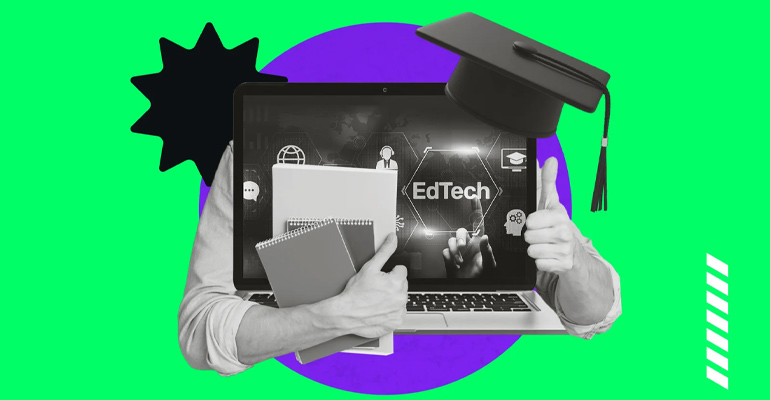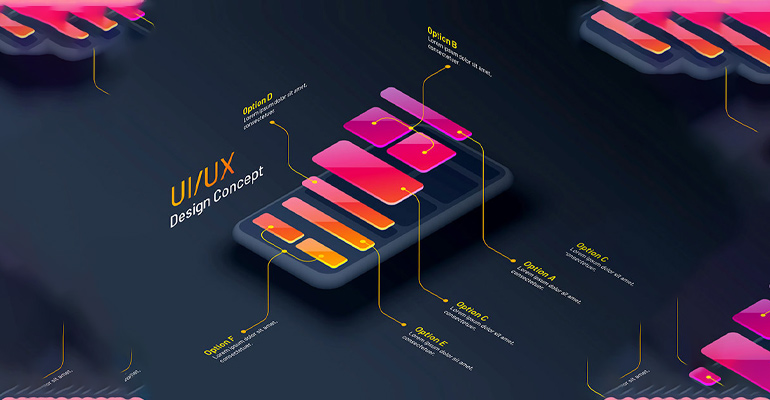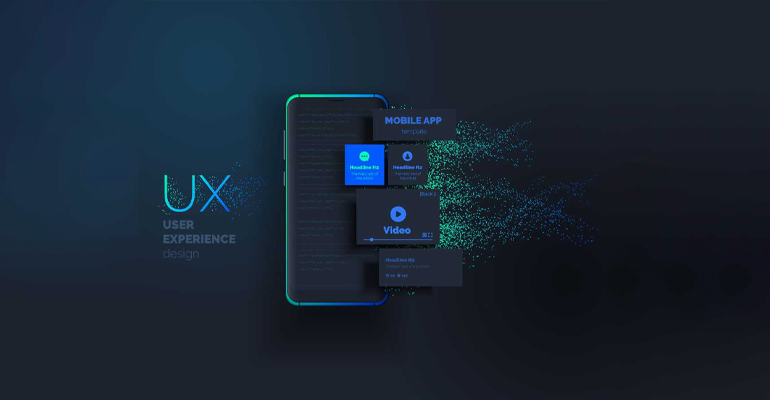In the fast-paced world of educational technology, UX education has become a game-changer. EdTech companies are realizing that creating products with excellent user experience is key to winning over students and educators alike. From design thinking to gamification, the field of UX Education is evolving rapidly, shaping how learners interact with digital tools and platforms. This shift has an impact on everything from classroom management to social emotional learning, making it crucial for EdTech developers to master the art of user-centered design.
To create winning EdTech products, companies need to focus on several key areas. These include perfecting user flows, conducting thorough UX research, and designing intuitive data dashboards. Additionally, they must consider factors like student engagement, visual memory, and learning models. By adopting a mobile-first approach and aligning with curriculum standards, EdTech developers can create tools that truly enhance learner agency. This article will explore strategies to build EdTech products that not only meet user needs but also revolutionize the educational landscape.
Understanding the UX Education Landscape
The UX Education landscape is a complex and dynamic environment that requires a deep understanding of both educational principles and user experience design. As EdTech startups gain popularity, they face unique challenges in creating products that truly enhance learning experiences.

Unique Challenges in UX Education
One of the biggest hurdles for EdTech companies is ensuring satisfactory usability. Many platforms struggle to create interfaces that are intuitive for both teachers and students . This is particularly evident when introducing new technologies like AR/VR, which users may find challenging to navigate. Additionally, EdTech products must address concerns about data security and privacy, as stakeholders need assurance that crucial information will be protected .
Key Stakeholders in EdTech
Understanding and engaging with various stakeholders is crucial for success in the EdTech space. School administrators, teachers, and parents all play significant roles in the adoption and use of educational technology. Interestingly, students, who are the end-users, are often underrepresented in the buying process . This creates a unique challenge for EdTech companies to balance the needs of decision-makers with those of the actual users.
The Impact of UX on Learning Outcomes
Well-designed UX Education products has the power to significantly influence learning outcomes. By applying learning science principles to user flows, EdTech tools can support students in learning and retaining new concepts more effectively . For instance, products that provide opportunities for peer collaboration and support social-emotional learning tend to create more engaging and effective learning experiences.
To create truly impactful EdTech products, companies must integrate insights from both learning sciences and UX design. This collaborative approach ensures that educational content is not only easy to use but also optimized for effective learning . By focusing on these aspects, EdTech companies can develop products that stand out in a crowded marketplace and deliver real value to educators and learners alike.
Essential UX Design Principles for EdTech
User-centered design is crucial for creating effective EdTech products. This approach considers how people learn and physically interact with tools, leveraging commonalities in learning backed by science . By focusing on user needs, EdTech designers can create more intuitive and engaging learning experiences.

User-Centered Design Approach
To implement user-centered design, EdTech teams should conduct thorough user research, considering factors like classroom environment, internet connectivity, and physical interactions with the tool . This approach helps designers solve real challenges faced by teachers and students, enhancing engagement and delight in the learning process.
Accessibility and Inclusivity
Designing for accessibility and inclusivity is not only ethical but also makes good business sense. An estimated 15-20% of the world’s population lives with some form of disability . EdTech products should accommodate various types of disabilities, including temporary ones, to ensure a wider reach and better user experience for all.
Gamification and Engagement
Gamification has emerged as a powerful tool to enhance user engagement and learning in EdTech. By incorporating game-like elements such as points, badges, and challenges, EdTech products can significantly elevate the experience and effectiveness of their programs . For example, Duolingo uses gamification at every stage, with features like streak counts and internal currencies to keep users motivated .
To implement these principles effectively, EdTech designers should:
- Conduct user testing with diverse groups, including those with disabilities
- Use inclusive visuals and language in the product
- Implement gamification elements that align with learning objectives
- Ensure the product works well with assistive technologies
By focusing on these essential UX design principles, EdTech companies can create more engaging, accessible, and effective learning tools that cater to a wide range of users and learning styles.
Integrating Learning Science into UX Design
Integrating learning science into UX design is crucial for creating effective EdTech products. By combining principles from cognitive psychology and instructional design, developers can craft interfaces that enhance learning outcomes and user engagement.
Cognitive Load Theory in Interface Design
Cognitive Load Theory (CLT) plays a significant role in shaping UX Education. This theory, proposed by John Sweller in the late 1980s, suggests that the best learning happens when the environment aligns with human cognitive capacity . CLT identifies three types of cognitive load: intrinsic, extraneous, and germane. To optimize learning, designers should minimize extraneous load and focus on germane load, which directly contributes to learning .
Practical applications of CLT in UX Education include:
- Breaking complex concepts into smaller, manageable parts
- Using visual aids like diagrams and charts
- Providing clear, step-by-step instructions
- Eliminating non-essential information that may distract learners

Scaffolding and Progressive Disclosure
Scaffolding, a concept rooted in Vygotsky’s social learning theory, involves providing temporary support to learners as they develop new skills . In UX Education, this translates to:
- Offering context-sensitive help
- Gradually reducing support as learners gain competence
- Using progressive disclosure to reveal features incrementally
Progressive disclosure can be implemented through techniques like:
- Layered explanations, moving from general to detailed information
- Guided questioning to direct learner thinking
- Templates that guide document or presentation construction
Adaptive Learning Algorithms
Adaptive learning algorithms serve as the backbone of personalized learning experiences in EdTech. These algorithms analyze user interactions and performance data to create tailored learning paths . By integrating adaptive learning with UI/UX design, EdTech platforms can:
- Customize content based on individual learner needs
- Adjust difficulty levels in quizzes and assessments
- Provide personalized recommendations for resources
- Accommodate different learning styles and preferences
Implementing adaptive learning in UX Education requires seamless integration with Learning Management Systems (LMS) and user-friendly interfaces that dynamically adjust to learner progress .
Measuring and Iterating EdTech UX
Measuring and iterating UX in EdTech is crucial for creating products that truly enhance learning experiences. By implementing key performance indicators (KPIs), gathering user feedback, and adopting continuous improvement strategies, EdTech companies can refine their products to better serve educators and students.
Key Performance Indicators for EdTech UX
To gage the effectiveness of EdTech UX, companies should track several important metrics. Active users, session duration, and user retention rate are vital indicators of engagement . For instance, high numbers of daily, weekly, and monthly active users suggest that the platform consistently draws users back, indicating value and relevance. Longer session durations generally point to engaging content, while high retention rates signal user satisfaction and loyalty .
User Testing and Feedback Loops
User testing helps identify the optimal user experience for each unique product. Through task analyzes and user interviews, companies can uncover strengths and challenges in the current UX . Educators and students, as regular users of various EdTech tools, are ideal research partners. They often have keen insights for new or missing features that can broaden a tool’s appeal or application .
Continuous Improvement Strategies
Adopting an iterative design approach is key to improving UX Education. This process involves creating, testing, refining, and improving designs based on user feedback and insights . By implementing feedback loops and analyzing user behavior, designers can adapt their products to better align with user expectations and needs. Regular design reviews with cross-functional teams and stakeholders can help implement continuous improvements effectively .

Conclusion
To wrap up, the creation of winning EdTech products hinges on a deep understanding of UX education strategies. By focusing on user-centered design, accessibility, and gamification, EdTech companies can develop tools that have a real impact on learning outcomes. The integration of learning science principles, such as cognitive load theory and adaptive learning algorithms, further enhances the effectiveness of these digital educational platforms.
Measuring and refining UX Education is an ongoing process that requires attention to key performance indicators and user feedback. Through continuous improvement and iteration in the UX Education, EdTech developers can craft products that not only meet the needs of educators and students but also push the boundaries of digital learning. As the EdTech landscape continues to evolve, companies that prioritize UX education strategies will be well-positioned to create groundbreaking products that transform the educational experience.
FAQs
- What are the key strategies to ensure excellent user experience (UX)?
To ensure a superior UX Education, several strategies are pivotal: choosing the appropriate colors and layout, adopting a minimalistic approach, focusing on making a strong first impression with the app, emphasizing deep personalization, and thoroughly understanding the target audience before devising the design strategy. - What does a customer success strategy in UX Education entail?
In the context of EdTech, a customer success strategy aims to guarantee that students, educators, and educational institutions meet their educational objectives and goals through effective use of technology and educational resources. - Can you describe the UX design process?
The UX design process is a cyclical methodology that begins with user research and culminates in a refined solution. It involves stages such as research, prototyping, testing, and continuous refinement, starting with user research to pinpoint the issues or opportunities that the product or service will address. - What is UX design and what does it involve?
User experience (UX) design refers to the crafting of products or services to provide meaningful and relevant experiences to users. It encompasses various aspects of product development like branding, usability, functionality, and overall design, focusing on the user’s journey through interaction with the product or service.
